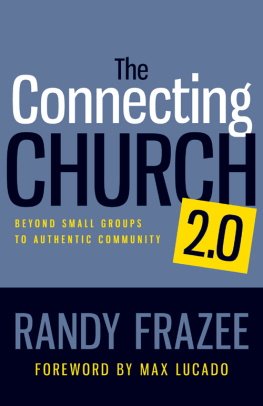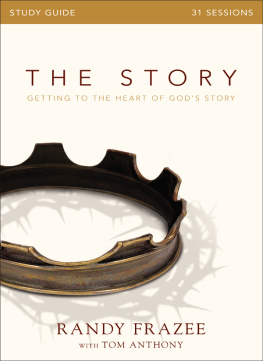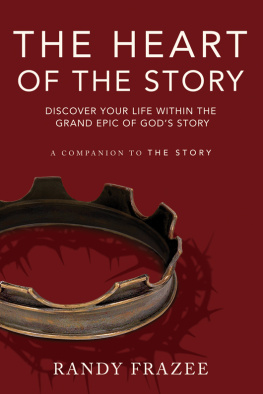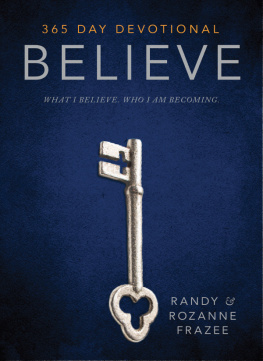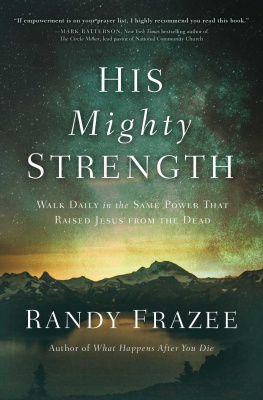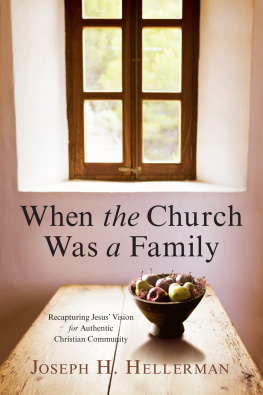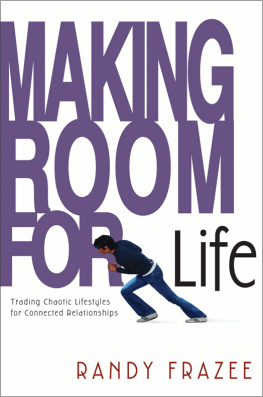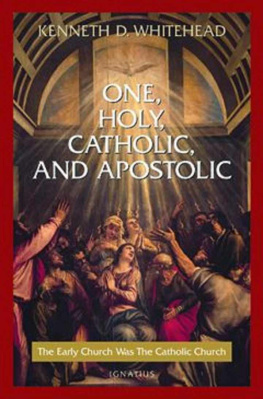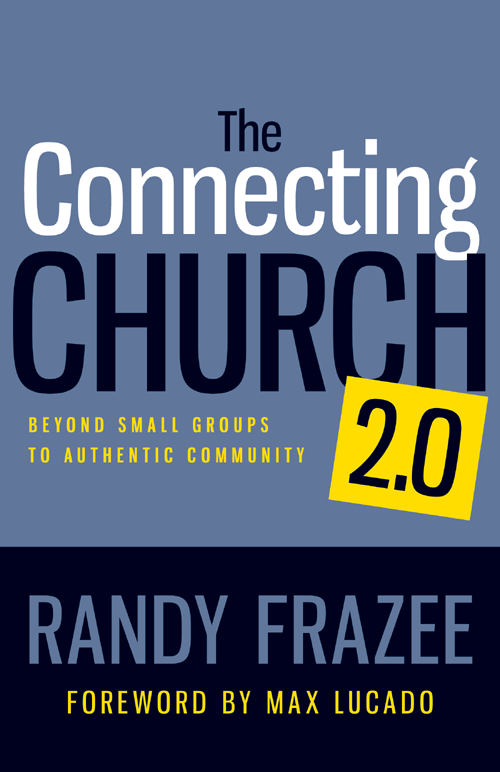What was the mightiest miracle of the first New Testament church? As you mentally thumb through the book of Acts, think of the greatest event. Many good answers surface:
the falling of the Holy Spirit in the upper room
the baptism of three thousand souls on the day of Pentecost
the healing of the crippled man at the temple gate
the conversion of Saul or the release of Peter or the vision of Stephen
Mighty miracles, for sure. If you would list any of them as the greatest of the New Testament church, I wouldnt blame you. But then again, I wouldnt agree with you. As great as these are, I feel there is one even greater. One that is often overlooked, easily neglected, but absolutely amazing. What is this mighty miracle? Unity. This church loved each other.
All the believers were together and shared everything. They would sell their land and the things they owned and then divide the money and give it to anyone who needed it. The believers met together in the Temple every day. They ate together in their homes, happy to share their food with joyful hearts. They praised God and were liked by all the people. Every day the Lord added those who were being saved to the group of believers.
Acts 2:4446 NCV
This was a dynamic church: Every day the Lord added those who were being saved to the group of believers. Membership went from zero to three thousand overnight! Every meeting had more faces; every service had new members. The Jerusalem 101 class was bursting at the seams!
This was a diverse church. We are from different places: Parthia, Media, Elam, Mesopotamia, Judea, Cappadocia, Pontus, Asia, Phrygia, Pamphylia, Egypt, the areas of Libya near Cyrene, Rome (both Jews and those who had become Jews), Crete, and Arabia (Acts 2:811 NCV). Fifteen different regions were represented! Jews came from all over the world. Some, like the Parthinians, were from the east. Others, like the Egyptians, were from the south. And some, like the Romans, from the north. Their food was different; their cultures different; their heart languages different. They came to be a part of the Passover; they stayed to be a part of the church.
Within a short time, according to Acts 4:4, the church grew to five thousand male members, which means as many as twenty thousand men, women, and children were a part of this fellowship. Many of them were from other lands. They had no place to sleep or eat. So what happened? How did they survive? All the believers were together and shared everything. They would sell their land and the things they owned and then divide the money and give it to anyone who needed it.
How can fellowship be born of such diversity? How can you feel a part of a church that seems to change every day? How can you feel at home when you are meeting new people at every service? Many church members ask the same questions today. Succinctly stated, it goes like this: How can we connect? With each other? With our neighbors? In our communities?
My friend Randy Frazee has spent a lifetime studying this question. Part pastor, part sociologist, he has made connection his passion. He has much to teach us.
I am blessed to have a front-row seat. As his coworker in the Oak Hills Church of San Antonio, Texas, I am able to watch the wonder of a connecting church. Under his leadership the connective tissue of the congregation is growing stronger. More people are finding their place. Most of all, more people are finding Christ.
I commend Randy and his teachings to you without hesitation. There is something in these pages for every person, from sincere seeker to seasoned follower. Randys enthusiasm is contagious. Unity happened in the first-century church. May it happen again!
It has been ten years since the first edition of The Connecting Church was released. Wow! A whole decade. When I turned ten, it had taken an entire lifetime to get there. Now I feel a little like Rip Van Winklelike I took a nap and woke up to find a decade gone. And the speed of change has been even faster than the ticking of a clock. Without question, someone forgot to put a governor on change; it no longer adheres to the speed limit we thought we had.
Think of the changing rate of technological advances. The first computer came out in 1939. It was the size of a typical dining room the whole room! It took thirty-five more years for the first personal computer to come out. It fit on a desktop. The first notebook computer came out ten years later. It fit in a briefcase. Four years after that, all the programs and data that once fit into my notebook computer are in my smartphone, and I can retrieve them faster than ever. The phone fits into my pocket. As amazing as this is, I am confident that just in the time it takes these words to make it to the shelf of a bookstore (assuming printed books are still around a year from now), some better, smarter, and faster device will be available.
While technology has created all kinds of new revenue streams and new opportunities to stay connected to people around the world, its change rate has also accelerated our loneliness. More and more folks, young and old, rely almost exclusively on the technology of e-mail, texting, Twitter, and Facebook for their relationships and they will also rely on the new things invented tomorrow. In addition, many people create an online avatar that is utterly different from the person they really are.
You dont have to take a class in sociology to know this wont cut it. You dont have to go to seminary to know this is no substitute for the way God designed for us to live. We were wired to require eye-to-eye contact. We were created for real hugs. While technology can be a good supplement and time-saver, it is not a replacement for a good ole-fashioned dinner with your family or holding the hand of a friend in trouble. Nothing can replace hanging out in the same room where someone involuntarily breaks out in an all-out belly laugh. Virtual condolences will never match the power of simply being there when a friend is bruised in a relationship or broken by an unexpected announcement.
Think of the cultural and economic changes in the United States since the new millennium began. The year 2001, when the first edition of The Connecting Church was published, introduced a permanent shift in this country. The attacks on September 11 changed the way we understood ourselves as a nation, perhaps forever. Since then weve been at war and experienced a crash in our housing market. While there is still an unbelievable sense of opportunity and optimism among many Americans, there is also a growing notion that maybe we are at an irreversible tipping point. Some even fear we may be entering a permanent downward economic spiral. Our sixteen trillion dollar debt and an out-of-control rise in government spending can make the economy seem like a proverbial house of cards.
In one sense, I hope things get better. And yet in another sense, maybe it is a good thing we are where we are. When I did my initial research in the late 1990s, social scientists were suggesting that the only possible situation that might disrupt the negative cycle of individualism, isolation, consumerism in America was an economic collapse. As long as Americans have so much discretionary money, they will continue to purchase products and engage in activities that will further fragment their lives and keep them from looking for real, God-ordained solutions that bring genuine happiness. In recent years, however, rising fuel prices have caused folks to think twice about getting on a plane or taking a road trip for a vacation, opting to stay home instead. Now many of us have a fresh opportunity to dig some deeper roots in our community and engage with our neighbors. While we may lose our financial strength and curb our mobility, we also may gain something that will genuinely increase our joy and longevity connected relationships, community. Maybe this is an acceptable swap.

